#fohlen
Video
Life amongst the buttercups by Regina
Via Flickr:
This is a photo I take every year when I visit the foals at our state stud at Marbach because I love to see them relaxing amongst the buttercups. The foal in this photo is an Arabian colt.
#Fohlen#foal#Araber#Araberpferd#Pferd#horse#Arabian#Arab#Tier#animal#Marbach#Haupt-#und#Landgestüt#flickr
78 notes
·
View notes
Text


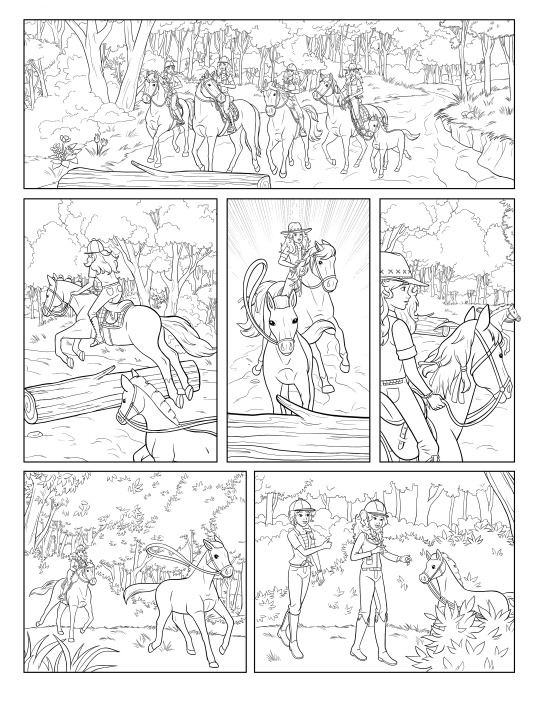
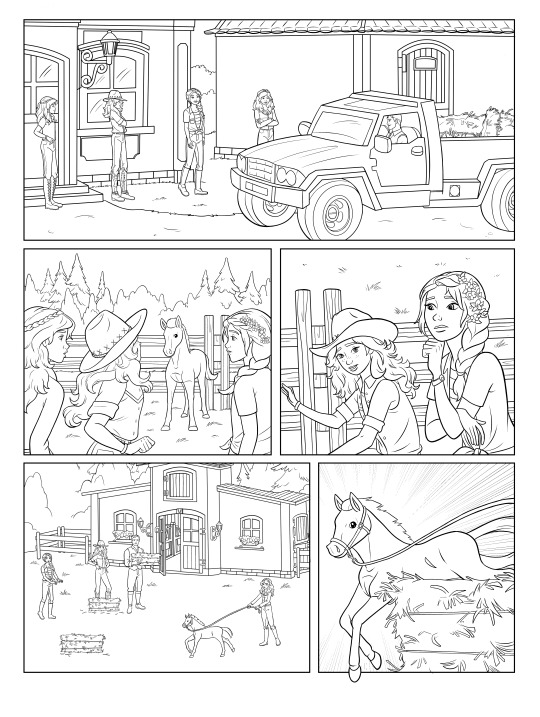
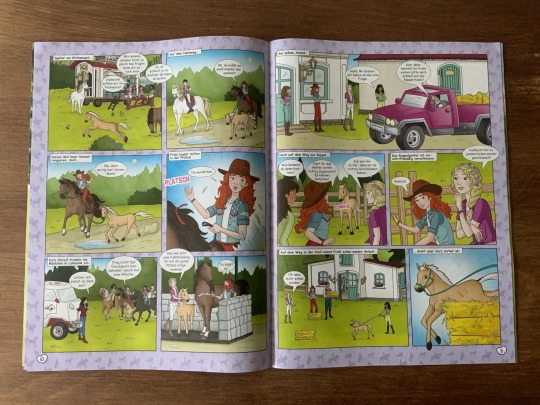
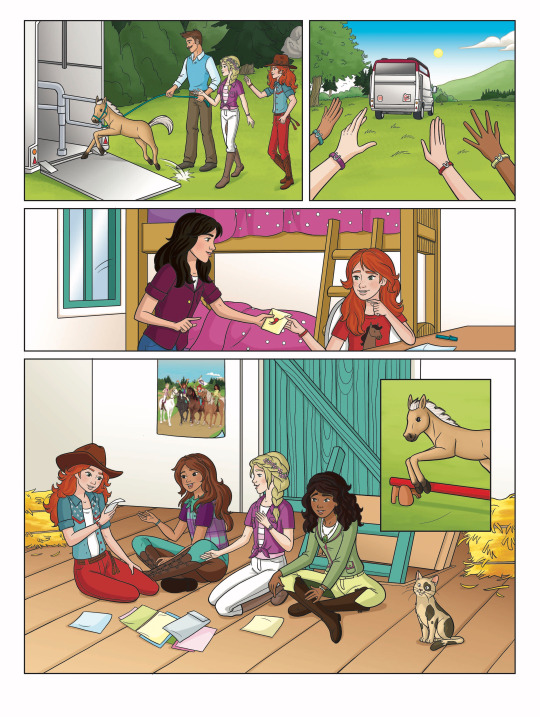
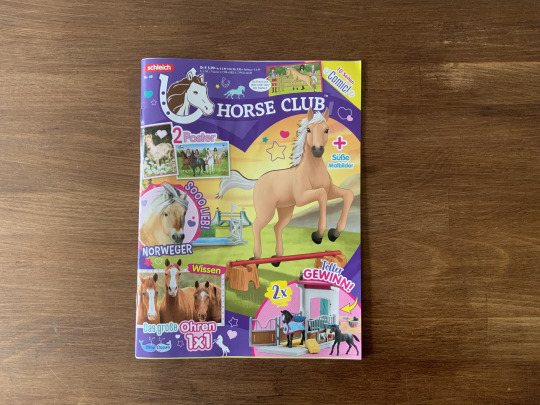
New Horse Club magazine! 🏇
I drew the comic for the Nr. 49 episode of the Schleich comic series “Horse Club” in collaboration with Comicon studio and colors by Eva Blank, story by Sophie Luise Bauer. It is published by Blue Ocean Entertainment
#comic#drawing#illustration#cartoon#horses#horse club#schlecih#horse club schleich#horse club magazine#pferde#fohlen#verlag#zeichungen#comic page#comic art
2 notes
·
View notes
Photo

Überschwängerung bei einer Stute. In Nr. 6 der Revue de Zootechnie (1931) beschreibt P. D. einen Fall von Überschwängerung. Ein Berberpferd in der Nähe von Konstantine (Algerien) wurde zur Erzeugung eines Maultieres von einem Eselhengst gedeckt, kurze Zeit darauf unbeabsichtigt von einem Hengst. Bei der Geburt fiel zuerst ein Fohlen und kurze Zeit nachher ein Maultier, beide wohlgestaltet, das Fohlen nur wenig schwere als das Maultier. Das beigegebene Bild läßt den Unterschied zwischen Maultier und Pferd sehr gut erkennen.
- Stegen
Züchtungskunde, 1931, Band VI.
16 notes
·
View notes
Video
youtube
Ranch Challenge #11 | Das Fohlen kommt zur Welt
Hey, hey Leute!
Eine neue Folge von der Ranch Challenge ist da.
Schaut doch mal rein und hinterlasst gerne ein Kommentar.
Über ein Like und ein Abo, falls noch nicht getan, würde ich mich auch sehr freuen.
In der Folge geht es rund um die Liebe und die Geburt des Fohlen.
➤ SOCIAL MEDIA:
------- Alles rund um Sims und Multiplayer Games -------
💬 DISCORD Spiel Hölle
➤Discord: https://discord.gg/cypSdMVDr6
#youtube#Die Sims 4#Sims 4#Sims#The sims 4#The Sims#ts4#Ranch Challenge#Fohlen#SYTCMH#LP#Let´s Play#diesims4#sims4#thesims4#thesims#Pferderanch#Challenge#Community
0 notes
Text

1 note
·
View note
Text
Fohlenliebe ❤️
Ihr wollt auch Bilder von euren Fohlen?
Meldet euch bei mir und wir besprechen alles Weitere ❤️

1 note
·
View note
Photo

Renée Sintenis (1888 Glatz /Schlesien – 1965 Berlin) - Fohlen mit angehobener Hinterhand, 1919. x
387 notes
·
View notes
Video
Nice to meet you ! by Regina
Via Flickr:
Here is one of several Arabian foals I met at Marbach. It's always a delight to see them but taking photos wasn't easy this time as they were on a pasture with very long grass in which the foals almost disappeared. :)
#Fohlen#foal#Pferd#horse#Araber#Arab#Arabian#Araberfohlen#Weide#pasture#Gras#grass#Portrait#tier#animal#Vollblutaraber#purebred#Jungtier#youngster#flickr
90 notes
·
View notes
Photo





New Horse Club magazine!🏇
I drew the comic for the Nr. 44 episode of the Schleich comic series “Horse Club” in collaboration with Comicon studio and colors by Eva Blank, story by Angela Kirchner. It is published by Blue Ocean Entertainment
#horse club#horse club schleich#schlecih#blue ocean entertainment#comic#comicart#comic panel#horse#cartoon#Illustration#drawing#pferde#zeichungen#Illustrationen#magazine#fohlen#verlag#kindermagazin
1 note
·
View note
Text
I randomly found a 500 page French book on OpenLibrary about the etymology of animal names so here are 10 (ish) fun facts:
the French word for poodle, “caniche” looks like it definitely comes from Latin “canis” (dog) but no! It comes from cane / canard (duck) because it was a waterfowl-hunting dog—and its name in English, Swedish, German, Dutch (poodle, pudel, puedel) also reflects this dog’s affinity with water (from pudeln = to splash about). It’s like otters, whose name come from the same root as water...
the canary on the other hand is named after canis / dog, since it comes from the Canary Islands which, according to Pliny the Elder, were named after the huge dogs that lived there at some point. Some historians think these mysterious big dogs were actually seals or big lizards. Then a bird ended up with the name ‘from the dog place’ though it’s unclear if dogs were ever truly involved. (Meanwhile Spain / Hispania comes from the Phoenician i-shepan-im, the place with rabbits.) I like the idea of ancient humans seeing seals or lizards and going “weird dogs”. Like how ancient Greeks saw hyenas and named them “pigs, I guess?”
the fox has a great diversity of names in Europe: fox / Fuchs, zorro, räv, volpe, raposa, lisu, róka, renard... In French it used to be called ‘goupil’, from the same Latin root as the Italian ‘volpe’, but then the mediaeval cycle of poems known as Le Roman de Renart, about an unprincipled fox named Renart, became so popular that renard became the word for fox and goupil disappeared. It’s like if 500 years from now bears in English were called baloos. (The English and German words for fox come from the indo-european root puk- which means tail, like Hungarian ‘farkas’ (wolf) which means tail-having, or squirrel, from the Greek words for shade + tail, there are actually lots of animals that are just “that one with a tail”...)
French has a word for baby rabbit (lapereau) derived from Latin leporellus (little hare) and we used to have a word for adult rabbit (conin) from Latin cuniculus (rabbit)—related to the German Kaninchen, Italian coniglio, Spanish conejo, etc. But ‘conin’ in Old French also meant pussy (there were mediaeval puns about this in the Roman de Renart) and at some point I guess people were like okay, it was funny at first but we’ve run this joke into the ground, and a new and politically correct word appeared for adult rabbit (lapin) based on the pre-existing word for baby rabbit (lapereau).
The english bear is thought to come from the proto-IE root bher-, for brown—I love how Finnish has so many nicknames and euphemisms for “bear” ranging from “honey palm” to “apple of the forest” and English is like... dude’s brown. Same amount of effort with the Swedish and Danish words for fox, räv / ræv, from a root that means reddish-brown. (And the Hungarian word for lion, oroszlán, along with the Turkish ‘aslan’, comes from proto-Turkic arislan / arsilan which comes from arsil which means brown...) And since brown was already taken, ‘beaver’ (+ German, Dutch, Swedish...: Biber, bever, bäver) has been speculated to come from bhe-bhrus-, a doubling of the original root so... brownbrown.
English foal / German Fohlen / French poulain / Italian puledro all come from the proto-IE root pu- which means small (e.g. Latin puer and Greek pais = child)—then the French ‘poulain’ became ‘poulenet’ with the diminutive -et (so, a smallsmall animal) and poulenet became powny in Scots then pony in English, which was then re-imported by French as ‘poney’. Also the Spanish word for donkey, burro, comes from Latin burricus = small horse, and in French Eeyore is named Bourriquet with the -et diminutive ending, so we just keep taking small horses and turning them into smallsmall horses...
The boa (bo(v)a) shares the same etymology as bovine / bœuf / beef, due to a widespread belief that some snakes suckled milk from cows. Pliny the Elder stated this as fact and (not to bully him but) modern research tells us “there is no empirical basis for saying snakes like mammal milk; experiments, indeed, have shown that captive snakes systematically refuse to drink milk”
I was disappointed to learn that antelope comes from Greek anthólops which referred to a mythical creature, because I grew up convinced the origin of the word (antilope in French) was anti-lupus, as in, the gazelle is the generic prey so as a concept it’s the opposite of the wolf, the generic predator. Wolf and anti-wolf. Though it raised the question of why we don’t have antilions (zebra), anticats (mice) and antibears (salmons)
Many European languages have named kites after some sort of flying animal: in English it comes from the word for owl, in Portuguese from the word for parrot, in Italian from eagle, and in French it’s cerf-volant aka flying-deer. There’s an interesting hypothesis for this! Kites came to Europe from China, where they were often shaped like dragons or snakes, and snake is serpent in French and serpe in Old French, so it’s possible that kites were serpe-volants aka flying-snakes. But the ‘p’ and ‘v’ next to one another were a hassle to pronounce so the p got dropped and it became ser-volant, then ‘ser’ which isn’t a word started being mistaken for ‘cerf’ which is pronounced ‘ser’ but means deer...
(We did it again with chauve-souris (bald-mouse = bat), which comes from the Gaulish cawa-sorix aka owl-mouse—which makes more sense as a name for bats! similar to the German Fledermaus, flying-mouse, and Spanish murciélago, blind-mouse. But Gaulish ‘cawa’ was mixed up with Latin ‘calva’ = chauve = bald, so now a French bat is a bald-mouse)
I love etymology, it’s all flying deer and dogs named splash and snakes named cow and ponies named smallsmall and five animals named brown and three named tail—words acquire a veneer of linguistic respectability over the centuries and we forget that fundamentally everyone just says whatever
2K notes
·
View notes
Text
Schau dir "Zügel unabhängig" auf YouTube an
Schau dir “Zügel unabhängig” auf YouTube an
View On WordPress
0 notes
Text
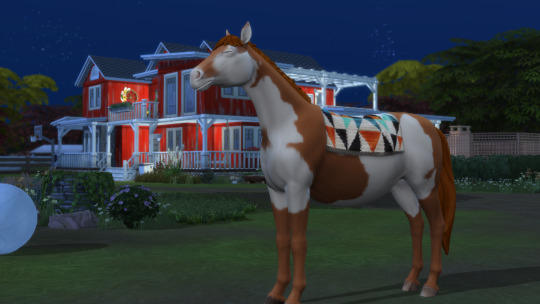
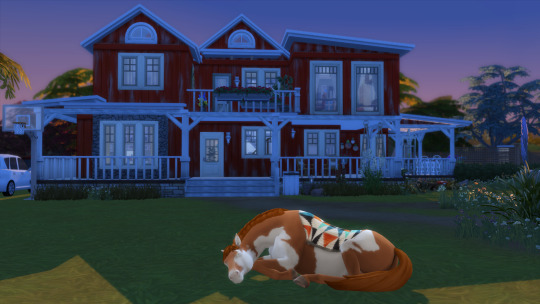




Moon ist die ganze Nacht nervös.
Erst im Morgengrauen findet sie ein wenig Ruhe. 😴
Vier Stunden später ist die ganze Familie Maxwell auf den Beinen. Denn das neue Fohlen ist unterwegs.
Keyan beruhigt Moon und hilft ihr zu entspannen.
Endlich ... Ein kleines Stutfohlen erblickt das Licht der Welt. 🤠
#susen70#sims 4#sims 4 screenshots#sims 4 story#sims 4 gameplay#ts4 story#ts4 simblr#maxwell gen9#chestnut ridge#gabe und sam#jona und jamie#josh und keyan#simblr
8 notes
·
View notes


